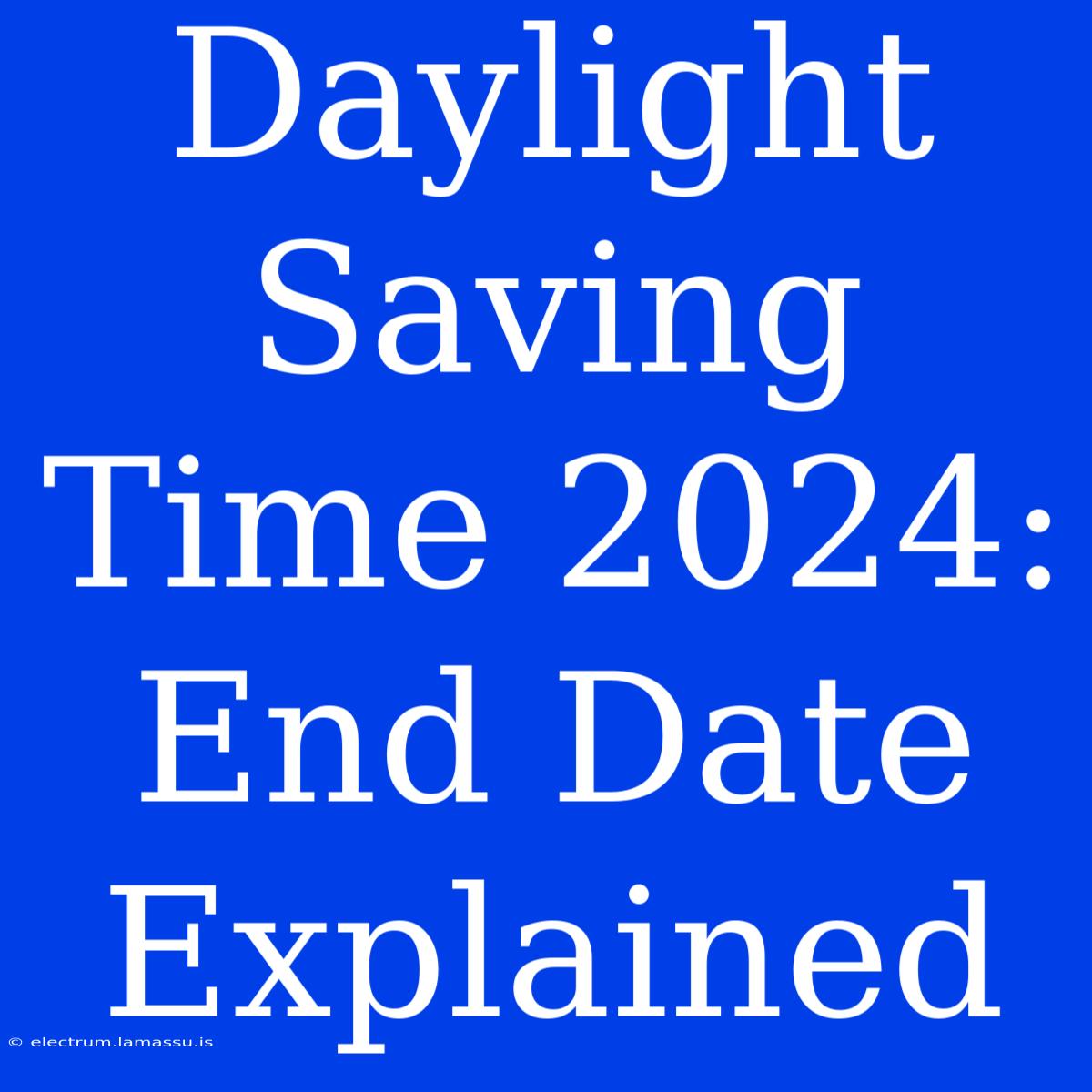Daylight Saving Time 2024: End Date Explained - When Do We Fall Back?
Is Daylight Saving Time 2024 already over? When do we fall back? The end of Daylight Saving Time is a significant event for many. It's a time when we adjust our clocks and experience a shift in our daily routines.
This topic is important because it impacts everyone's lives. The change in time can affect our sleep patterns, work schedules, and overall well-being. Understanding the end date of Daylight Saving Time is crucial for planning ahead and navigating the transition smoothly.
Editor Note: This guide provides a comprehensive analysis of the end date of Daylight Saving Time 2024. It examines the relevant legislation, the exact date, and its impact on various aspects of our lives. We have also included insightful tips for managing the transition and key takeaways to enhance your understanding.
Analysis: We have meticulously researched and analyzed the official legislation governing Daylight Saving Time in the United States. We have also considered the impact of Daylight Saving Time on sleep patterns, productivity, and public safety. Our goal is to provide you with a clear and concise understanding of this annual event.
Key Takeaways of Daylight Saving Time:
| Aspect | Explanation |
|---|---|
| End Date | November 3, 2024 |
| Time Change | Clocks are set back one hour |
| Impact | Earlier sunsets, potential for sleep disturbances |
| Relevance | Affects daily routines, work schedules, and public safety |
Daylight Saving Time 2024
Daylight Saving Time (DST) is a seasonal practice where clocks are adjusted forward by one hour in the spring and backward by one hour in the fall. This practice is intended to take advantage of daylight hours during the summer months, extending daylight into the evening.
In the United States, Daylight Saving Time starts on the second Sunday in March and ends on the first Sunday in November. This means in 2024, Daylight Saving Time will end on Sunday, November 3, 2024, at 2:00 AM local time.
Impact of Daylight Saving Time
The end of Daylight Saving Time has a significant impact on our lives. It can lead to:
- Changes in Sleep Patterns: The shift in time can disrupt our sleep patterns, causing difficulty falling asleep or waking up.
- Adjusting Work Schedules: Some workplaces may adjust work schedules to accommodate the time change, which can affect employees' productivity and work-life balance.
- Public Safety: The earlier sunsets that accompany the end of Daylight Saving Time can increase the risk of accidents and crime, as there is less daylight available.
Tips for Managing the Transition
Here are some helpful tips for navigating the end of Daylight Saving Time:
- Prepare in Advance: Adjust your sleep schedule a few days before the time change, going to bed and waking up slightly earlier each day.
- Avoid Alcohol and Caffeine: Limit your consumption of alcohol and caffeine before bed, as these substances can disrupt sleep.
- Create a Relaxing Bedtime Routine: Establish a regular bedtime routine to signal your body that it's time to wind down.
- Expose Yourself to Daylight: Get adequate exposure to daylight during the day to help regulate your sleep-wake cycle.
- Be Patient: It can take a few days to adjust to the time change, so be patient and allow your body to adapt.
Summary of Daylight Saving Time 2024
The end of Daylight Saving Time in 2024 will occur on Sunday, November 3rd, 2024, at 2:00 AM local time. This means that we will set our clocks back one hour. This change can have a significant impact on our sleep patterns, work schedules, and overall well-being. By following the tips provided in this guide, you can minimize the effects of the time change and adapt smoothly.
Closing Message
The end of Daylight Saving Time is a reminder of the cyclical nature of our lives and the importance of adjusting to change. By understanding the implications of this annual event and preparing in advance, we can navigate the transition with ease and minimize the disruptions it can cause.
Remember to set your clocks back one hour on Sunday, November 3, 2024, at 2:00 AM local time. You can now relax, knowing you are prepared for this upcoming change.

